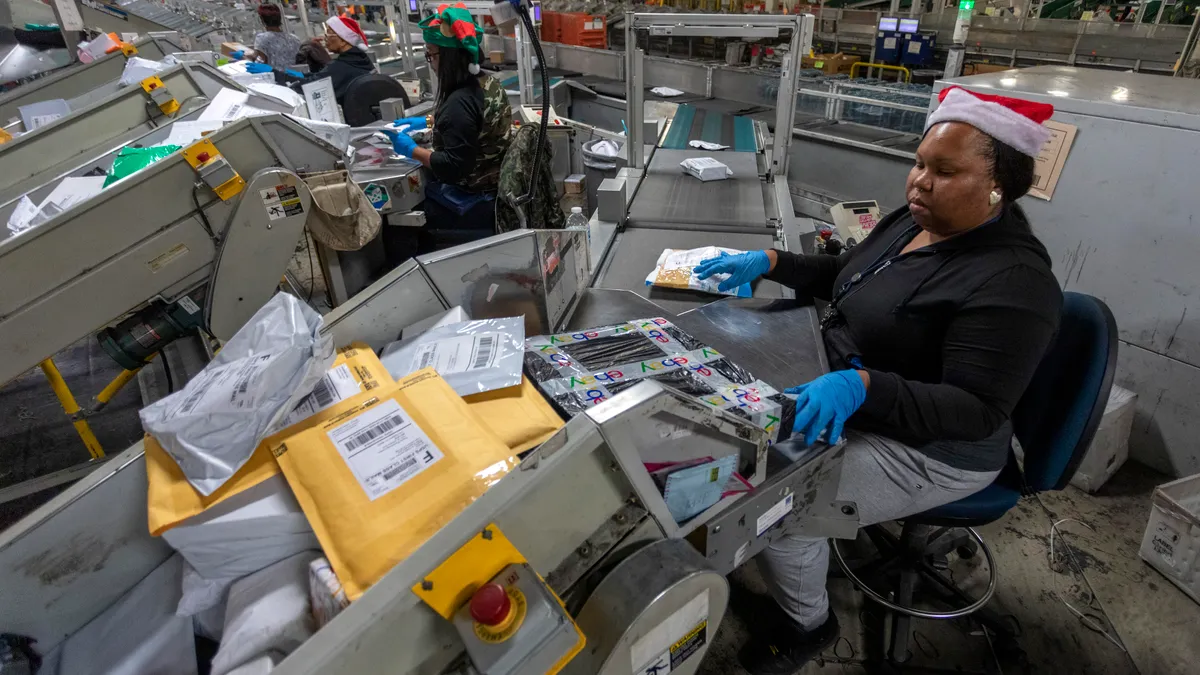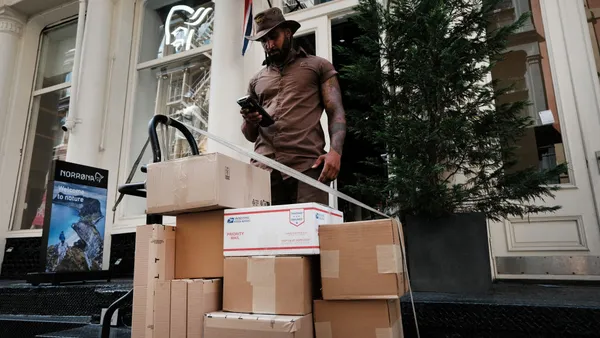While the U.S. Postal Service has paused the consolidation of more mail processing operations this year, the agency will still advance its wide-ranging network overhaul in other ways.
The Postal Service has been conducting reviews of local mail processing plants in recent months, focusing on whether to move their operations to a smaller number of regional plants. This shift, a key piece of its 10-year "Delivering for America" plan, aims to save costs driven by reduced transportation expenses for the financially struggling agency.
But lawmakers have pushed back against the process, in part due to concerns of the plan's impact on delivery reliability in their home states. Markets like Atlanta, which have experienced large-scale Postal Service network changes, have seen a decline in delivery reliability.
The pause, announced May 9, stops further implementations of changes that result from the facility reviews, as the Postal Service looks to restore confidence in its ambitious plan.
The agency has currently made decisions and quantified its investments at 59 sites in the review process across the country. It is now in the process of scheduling work for the initiative, which it expects to complete over the next 18 to 24 months, Postmaster General and CEO Louis DeJoy said in a May 20 letter to Sen. Gary Peters, D-Mich.
"Starting implementation of these changes after the first of the year is a logical choice considering where we are in the planning cycle, the additional work we have ongoing, our current efforts to stabilize service, and the upcoming election," DeJoy said.
However, progress in the USPS' network overhaul will continue this year at several facilities, nearly all of which are existing and operating. This includes 13 regional processing and distribution centers and 20 local processing centers, according to DeJoy.
USPS makes progress on network overhaul across the country
Despite the continuing work, the Postal Service still has a long way to go in terms of facility installations. It plans to eventually establish 60 regional processing and distribution centers and 190 local processing centers.
"The work we are engaging in with these initiatives is to catch up on 20 years of deferred maintenance, upgrade 30-year-old technology, install modern sortation equipment and rearrange our production floor layout to logically accommodate the difference between the size of a letter and the size of a package," DeJoy said.














